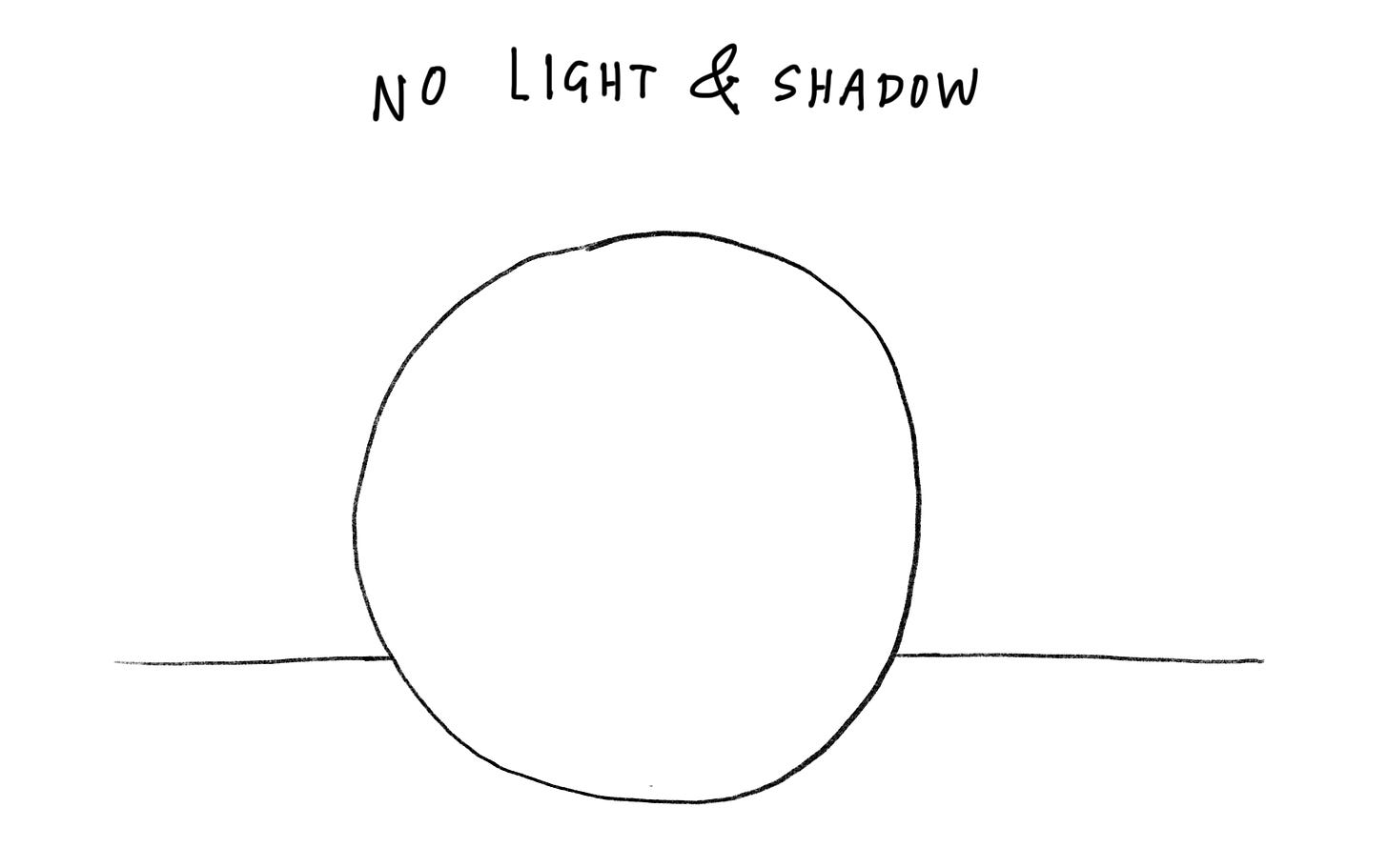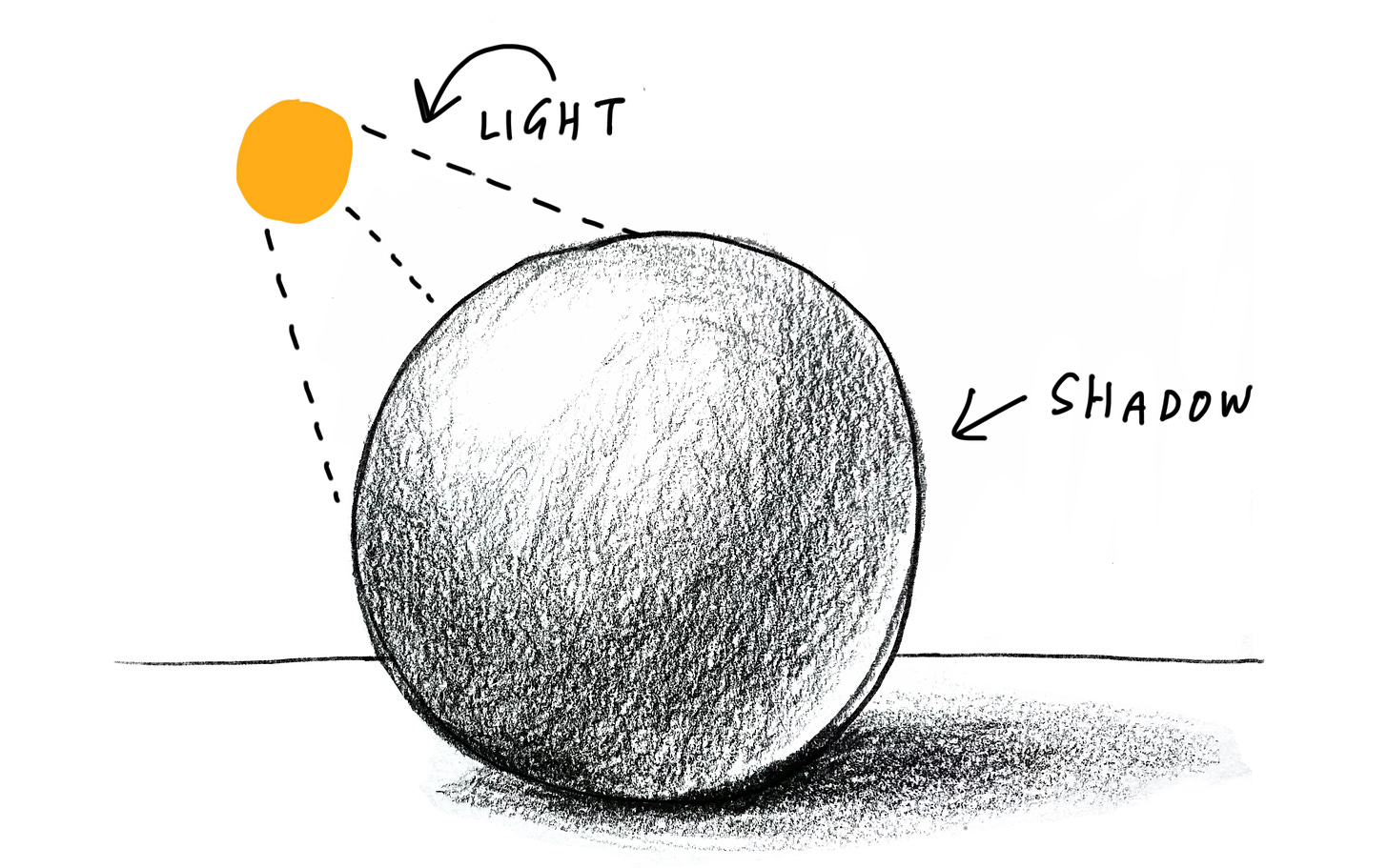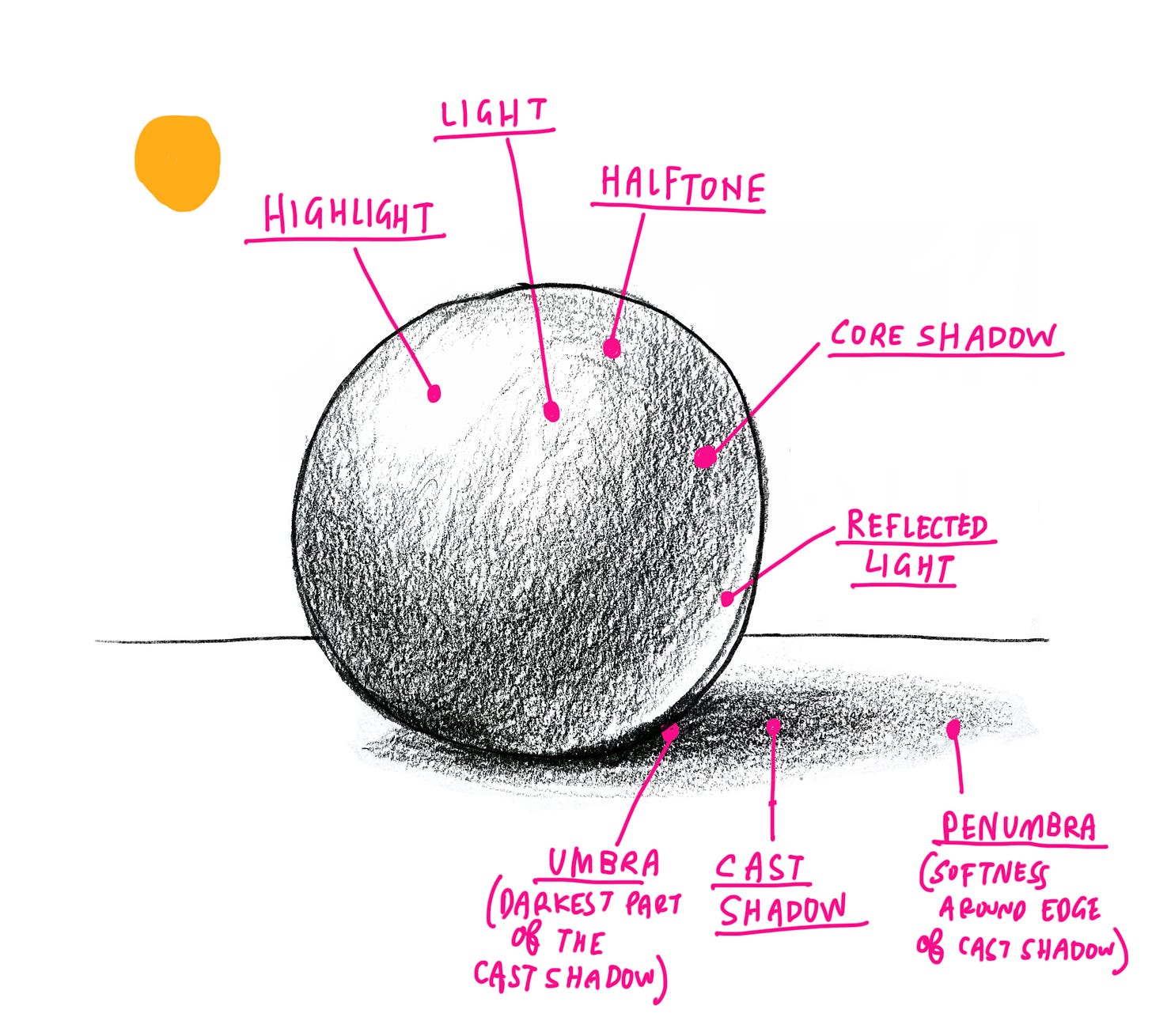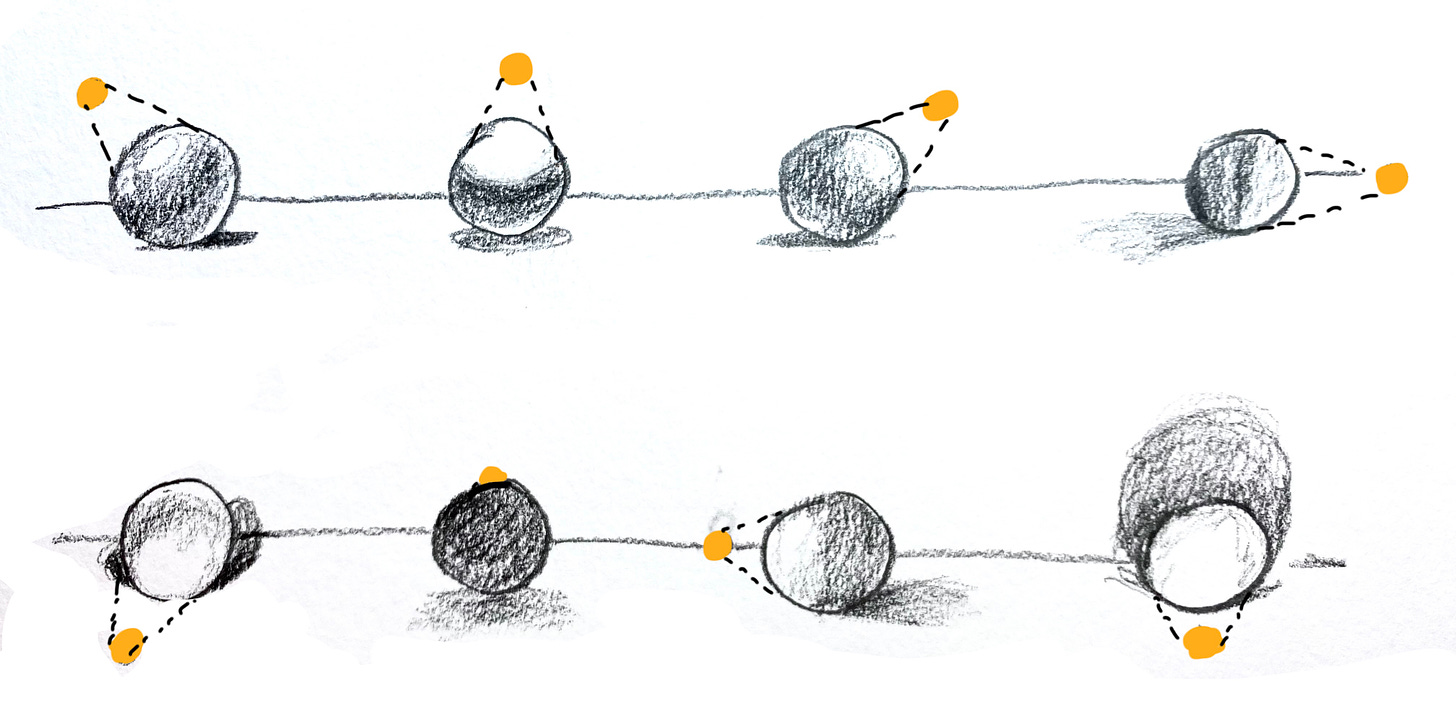Day 18. Fun Lesson: LIGHT & SHADOW
Shining a little light on drawing with shadow
My fine GUT Friends.
A reminder to pop over to the Grown-Ups Table Intros and introduce yourself if you haven’t already, and say hi to newcomers if you’ve been here a minute. Also the GUT FAQ is a great place to look for A’s to any Q’s you might have.
Unusual, I know, but today I’d like to start with a poem.
This morning, I read “Small Kindnesses” by Danusha Lameris and it made me think of us. How the small acts of kindness and care members of the Grown-Ups Table offers offer to one another - especially in moments of vulnerability - bring us together. And closer to our higher selves.
Small Kindnesses
by Danusha Laméris
I’ve been thinking about the way, when you walk
down a crowded aisle, people pull in their legs
to let you by. Or how strangers still say “bless you”
when someone sneezes, a leftover
from the Bubonic plague. “Don’t die,” we are saying.
And sometimes, when you spill lemons
from your grocery bag, someone else will help you
pick them up. Mostly, we don’t want to harm each other.
We want to be handed our cup of coffee hot,
and to say thank you to the person handing it. To smile
at them and for them to smile back. For the waitress
to call us honey when she sets down the bowl of clam chowder,
and for the driver in the red pick-up truck to let us pass.
We have so little of each other, now. So far
from tribe and fire. Only these brief moments of exchange.
What if they are the true dwelling of the holy, these
fleeting temples we make together when we say, “Here,
have my seat,” “Go ahead—you first,” “I like your hat.”
❤️
I appreciate you, Grown-Ups Table.
Now onto the drawing.
LIGHT AND SHADOW
Check out the drop shadow on that millipede!!!
What is a shadow? Why does it matter? Why does it do in a drawing? And if I want to make one, how do I know where to put it??
Today we are dipping our toes into light and shadow. This should be a good refresher for folks who know the basics, and an easy intro for newbies. I’m pulling this from a comprehensive intro to light I did in 2022 (yes, GUT, there is SO MUCH in the GUT archives. GUT subscriber-members have full access) so if you want to go deeper, go there. But today, here, we’re just doing a little intro to value, light and shadow. And silly space creatures.
Without further ado, let’s shine a little light on what makes a shadow.
How Light Works
Honestly, this is all you need to know:
Of course there is SO MUCH MORE awesome stuff to learn about light and drawing. But let’s just stick with the basics.
Light gives dimension to the world. It creates shadows, and together that light and shadow turn 2D “shapes" into 3D “forms.” (Circle into sphere, Square into cube, etc.) You need to experience the shadow to understand the full depth of the world. (Cheesy metaphor alert.)
The word we use in art to describe how light or dark something is Value.
The more range of value you use in your drawings or paintings, the more depth you are going to create. And while we often use color, today we are going to stick with black and white, cause that’s the easiest way to see it, and really start to “get it.”
Let’s apply that range of value to a circle, and turn it into a sphere.
Circle:
Got it. Add a light source, and drumrollllllll……
A SPHERE!
Cool, huh? And pretty straight forward.
Light works like this: where the light hits, it’s light. Where it doesn’t, there’s shadow. But look closely at the value on that sphere and in the shadow on the ground. It’s not like there's just one bright light area and one dark shadow area. There’s a TON going on in there.
Okay, take a deep breath .You don’t have to remember all this, but it’s helpful if you’re interested:
WHOA. So much more than we think! Cast Shadow! Umbra and Penumbra! Light v halftone. PHEW.
“Reflected light” is my personal favorite: did you know that when the the edge of a curved surface is in the dark, it will often glow from the reflection of the light hitting the surface it’s sitting on?? TRUE. And while we might not notice it with our naked eyes, when we introduce this subtle effect to our drawing, it really gives a round object extra glowing roundness.
This may be more than you care to know about shadow parts. But remember, once you know the rules, you can choose to ignore them.
Alright, now that we know how light falls on a sphere to create a shadow, imagine in your mind a light source moving around that sphere, casting a dark shadow… How does it change it? Where does the cast shadow go? Where is the highlight? The core shadow? Here’s a cheat sheet:
Overwhelmed? That’s totally okay and normal. Learning new stuff is hard! It will get easier, I promise. It just takes practice.
And remember, all you really need to know is this:
That is where we are going to stop today.
Got questions? Leave them in the comments! I am no penumbra expert, but I will do my best to answer them.
And now onto our daily drawing! Today we are doing something fun and different: we’re creating some character drawings. Specifically, silly space creatures, illuminated by the sun.
Obviously.
Let’s do this.










